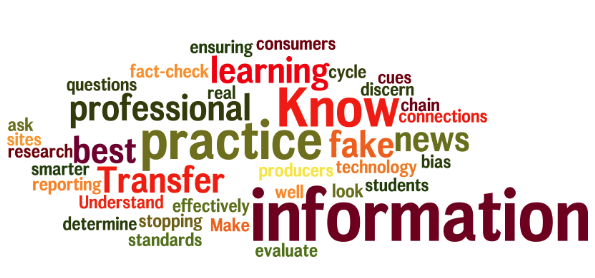Best News Sources

There are reputable sites and not so reputable sites for students and teachers on the Internet. After going through the first two sections of this module, you should be able to identify which column below is the one you can recommend to your students.
Steps:
1. You are going to go to each of the six sites below and do the same search at each site. Now after spending a couple of minutes at each site, which group do think you are more credible? Column A or Column B?
| Column A | Column B |
2. It should be pretty apparent to you which column is reputable. It will not be as apparent to your students as it is to you. Just in case you were not sure it is Column A. Column B is considered non-reputable and entices gullible people to believe. You will want to bookmark these sites in Diigo or Symbaloo to share with your students.
Note: The Scholastic News Online even has 39 children reporters currently who are reporting news around the world.
3. The American Library Association has compiled a list of ALA Great websites for kids. There are six categories total and News & Current Events, as well as Cultures of the World, have news sites for students.
4. Read the article called Media Literacy: Five Ways Teachers are Fighting Fake News. There are five great lesson ideas for you to use with students. Use one or more of the non-reputable sites above or the Onion to locate articles to use with the students in the lessons.
5. For yourself check out the 22 Best Apps for iPhone and Android. Don't be deceived by the title as most of these are websites that you can access on any device.
-
Flipboard and Buzzfeed are two very popular ones that the 21 Things Creators use daily
-
DO remember that these apps still pull news from everywhere and should be verified
-
Check the story on several sites before forwarding it on
-
Check for news bias before forwarding it on
After completing steps 1-5 move on to the Final Assignment.
Standards
Addressing the ISTE Standards For Educators
Learner
1a. Set professional learning goals to explore and apply pedagogical approaches made possible by technology and reflect on their effectiveness.
1c. Stay current with research that supports improved student learning outcomes, including findings from the learning sciences.
Leader
2b. Advocate for equitable access to educational technology, digital content and learning opportunities to meet the diverse needs of all students.
2c. Model for colleagues the identification, exploration,
evaluation, curation and adoption of
new digital resources and tools for learning.
Citizen
3a. Create experiences for learners to make positive, socially responsible contributions and exhibit empathetic behavior online that build relationships and community.
3b. Establish a learning culture that promotes curiosity and critical examination of online resources and fosters digital literacy and media fluency.
3c. Mentor students in safe, legal and ethical practices with digital tools and the protection of intellectual rights and property.
3d. Model and promote management of personal data and digital identity and protect student data privacy.
